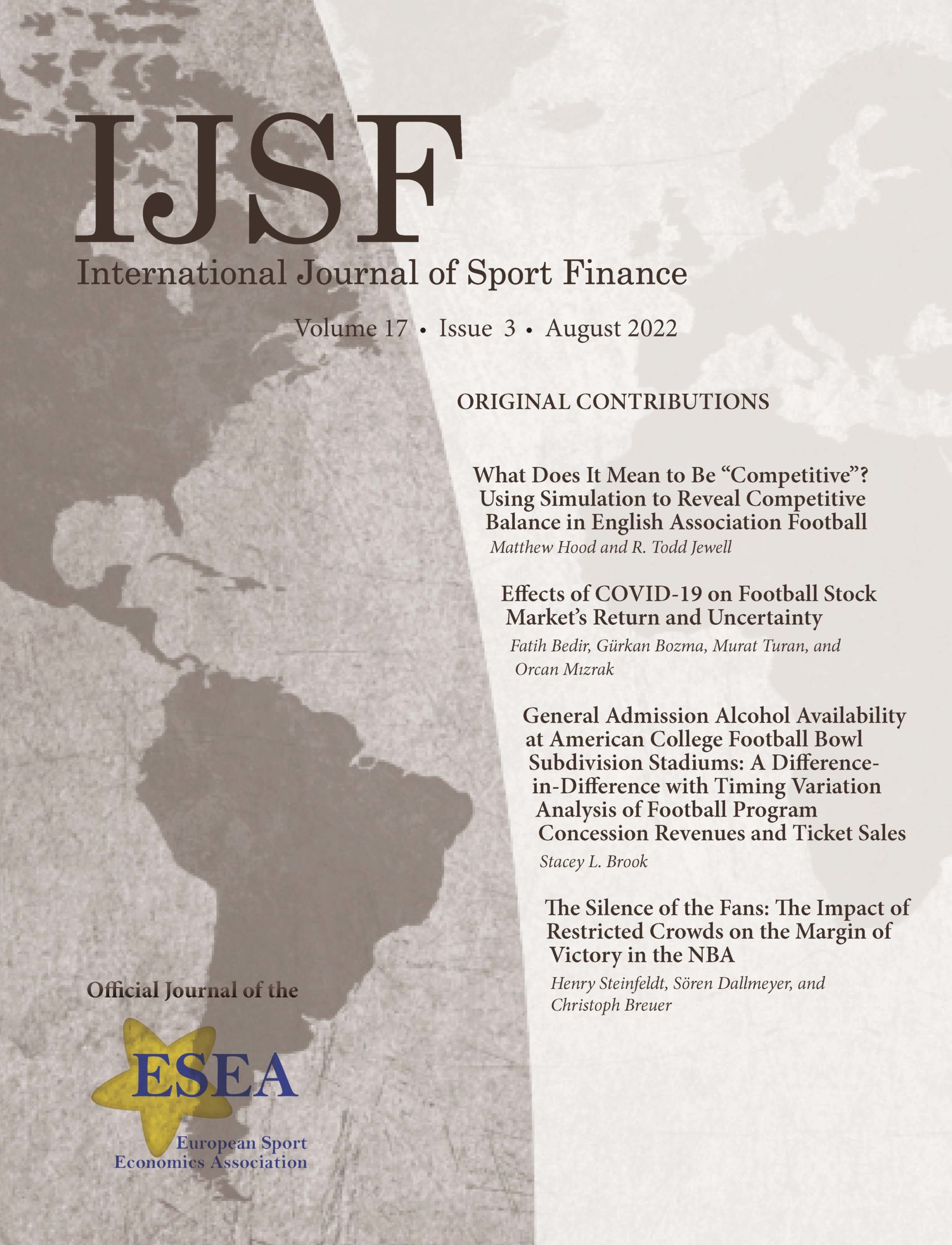International Journal of Sport Finance
Issue 17:3 – August, 2022
Issue 17:3 – August, 2022

Matthew Hood and R. Todd Jewell
This paper illustrates the value of using betting data to simulate an ex-ante distribution of league-point outcomes for English professional association football. Competition in the three tiers of the English Football League (EFL) is much more balanced than in the English Premier League (EPL). The competition at the top of the tables is more concentrated than at the bottom of the tables. Clubs relegated into a lower league tend to perform well the next season. Still, this effect does not seem to be impacted by parachute payments given to those relegated from the EPL into the second division.
Fatih Bedir, Gürkan Bozma, Murat Turan and Orcan Mızrak
The cancellation of mass gatherings was one of the earliest measures implemented to combat the spread of COVID-19. One of the sectors affected by this situation was sports organizations. The study aimed to analyze the impact of COVID-19 on the returns and volatility of football club stocks using mean and variance estimates. In line with this aim, the Stoxx Football Index was used to estimate the stocks of football clubs, and a dummy variable was used to estimate the effect of COVID-19. According to the analyses, it was found that COVID-19 had a negative and statistically significant impact on football index revenue. On the other hand, the results of the second moment analysis, the EGARCH-X model, suggested an increase in the Stoxx Football Index conditional variance (volatility) due to COVID-19.
Stacey L. Brook
The percentage of universities selling alcohol to legally aged general admission spectators at football bowl subdivision stadiums increased by nearly 150% from 2012 to 2018. Previous research examines the effect of alcohol availability on revenue using a pro forma case study for one university. The literature is extended by systematically analyzing public college football program concession and ticket revenues using data from the NCAA Membership Financial Reporting System covering the 2012 to 2018 seasons. Using a differential timing difference-in-difference methodology, universities allowing general admission alcohol sales causes concession revenues to increase by approximately $350,000 or $1.15 per fan during this time period, but allowing general admission alcohol sales does not have a statistically insignificant impact on ticket sales revenues.
Henry Steinfeldt, Sören Dallmeyer and Christoph Breuer
This study investigates the impact of restricted crowds caused by the COVID-19 pandemic on the margin of victory of games in the NBA. Using 12,500 game-level observations from 11 NBA seasons from 2010/11 to 2020/21, the study first shows that during the COVID-19 season of 2020/21, games had a greater average margin of victory than any of the prior seasons. Regression results reveal that games played in front of restricted crowds were more likely to be won by a margin of 15, 20, or 25 points than games played in front of non-restricted crowds. The results indicate similar effects for games played in an empty arena or in front of a small crowd. Implications for the NBA and other major team sports leagues are discussed.